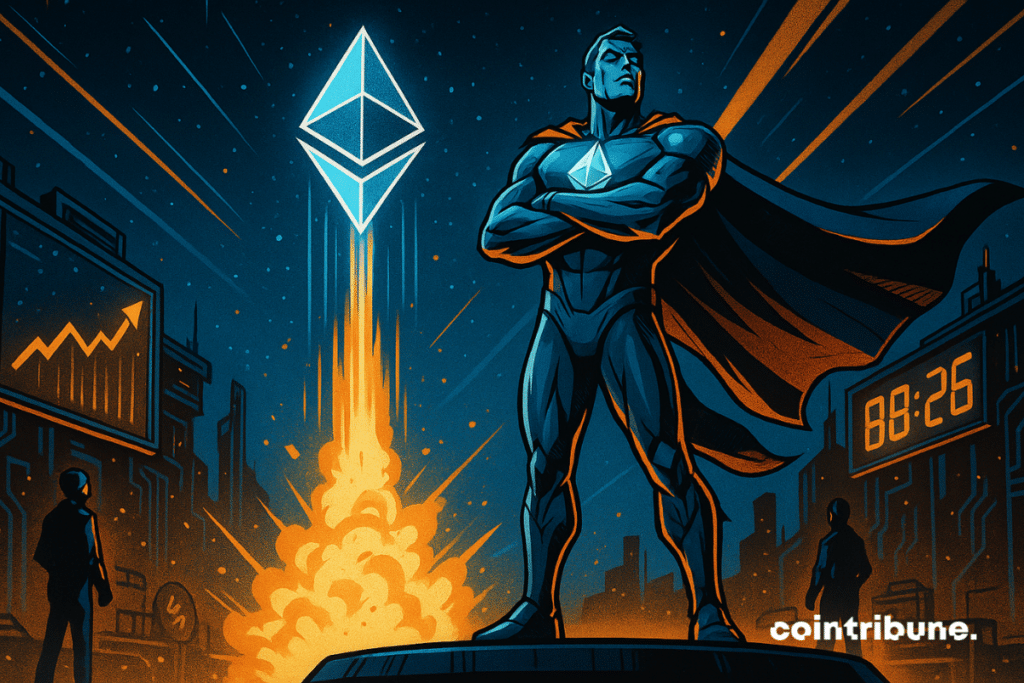EIP-7928 Revives Layer 1 Vs Layer 2 Debate
Ethereum is about to reach a decisive milestone. With EIP-7928, a bold proposal has just been presented to introduce parallel execution of transactions on Layer 1. Long considered an almost insurmountable challenge due to risks to system consistency, this breakthrough could deeply transform the network architecture. In response to persistent scalability limits, this new technical milestone revives debates among developers and marks a potential turning point for Ethereum’s evolution towards increased efficiency without compromising security.

In Brief
- A new update proposal, EIP-7928, could transform Ethereum’s scalability on Layer 1.
- This proposal aims to enable parallel transaction execution and faster block validation.
- EIP-7928 reignites the debate between Layer 1 developments and reliance on Layer 2 solutions.
- If adopted, EIP-7928 could reposition Ethereum L1 as a key player in scalability, not just as a settlement layer.
A Technical Breakthrough to Speed Up Block Validation
The Ethereum development team unveiled EIP-7928, a proposal introducing temporary code execution capability for external accounts. Indeed, the core of the EIP-7928 proposal rests on the introduction of Block-Level Access Lists (BALs).
Developer Toni Wahrstätter, one of the document’s authors, stated on May 14 on the social network X (formerly Twitter) :
“It is a mechanism aimed at enabling parallel execution of transactions and block validation.”
Such a technical innovation is based on a key principle : providing validators in advance with all necessary information regarding the transactions of a block so they can analyze them without having to execute them sequentially.
Concretely, the BALs list all addresses and storage locations related to the transactions of a block, along with the associated post-execution values. The system would bypass the current sequential reading, which is deemed inefficient against network scaling.
Thus, EIP-7928 introduces three major technical components directly integrated into the blocks’ bodies, which could allow Ethereum to reach a new level in its Layer 1 performance :
- The Block Access List (BAL) : a complete list of addresses and storage keys related to transactions ;
- Transaction indices : allowing precise location of each operation within the block ;
- Post-execution values : the final results each transaction leaves on the network’s global state.
According to Wahrstätter, this structuring would allow validators to perform parallel disk reads and validate blocks much faster than before. He adds that this advancement could also “allow an increase in the gas limit” in the future.
The interest of this proposal thus lies in a substantial improvement in network efficiency, without compromising its fundamental principles or depending on Layer 2 solutions.
A Milestone in the Debate Between L1 Scalability and Dependence on L2s
Beyond purely technical aspects, EIP-7928 reactivates an old debate within the Ethereum community: should scalability efforts focus on Layer 1 or continue on the path of Layer 2 ?
This type of proposal reinforces the idea “that it is necessary to also focus on L1 improvements”, while some community members rely exclusively on rollup-type solutions to address congestion and fee challenges.
The implementation of BALs does not seek to replace L2s, but rather to reposition L1 as a more robust, faster, and more competitive foundation.
In this perspective, Ethereum’s roadmap seems coherently orchestrated. After activating the Pectra update, which notably introduced account abstraction and a new design for ETH staking, the network is heading towards Fusaka, expected at the end of 2025.
This upcoming evolution plans the introduction of PeerDAS, an off-chain data sampling technology designed to reduce costs of Layer 2. Thus, Ethereum seems to follow a dual strategy : strengthening its base while supporting its extensions.
Maximize your Cointribune experience with our "Read to Earn" program! For every article you read, earn points and access exclusive rewards. Sign up now and start earning benefits.
Diplômé de Sciences Po Toulouse et titulaire d'une certification consultant blockchain délivrée par Alyra, j'ai rejoint l'aventure Cointribune en 2019. Convaincu du potentiel de la blockchain pour transformer de nombreux secteurs de l'économie, j'ai pris l'engagement de sensibiliser et d'informer le grand public sur cet écosystème en constante évolution. Mon objectif est de permettre à chacun de mieux comprendre la blockchain et de saisir les opportunités qu'elle offre. Je m'efforce chaque jour de fournir une analyse objective de l'actualité, de décrypter les tendances du marché, de relayer les dernières innovations technologiques et de mettre en perspective les enjeux économiques et sociétaux de cette révolution en marche.
The views, thoughts, and opinions expressed in this article belong solely to the author, and should not be taken as investment advice. Do your own research before taking any investment decisions.